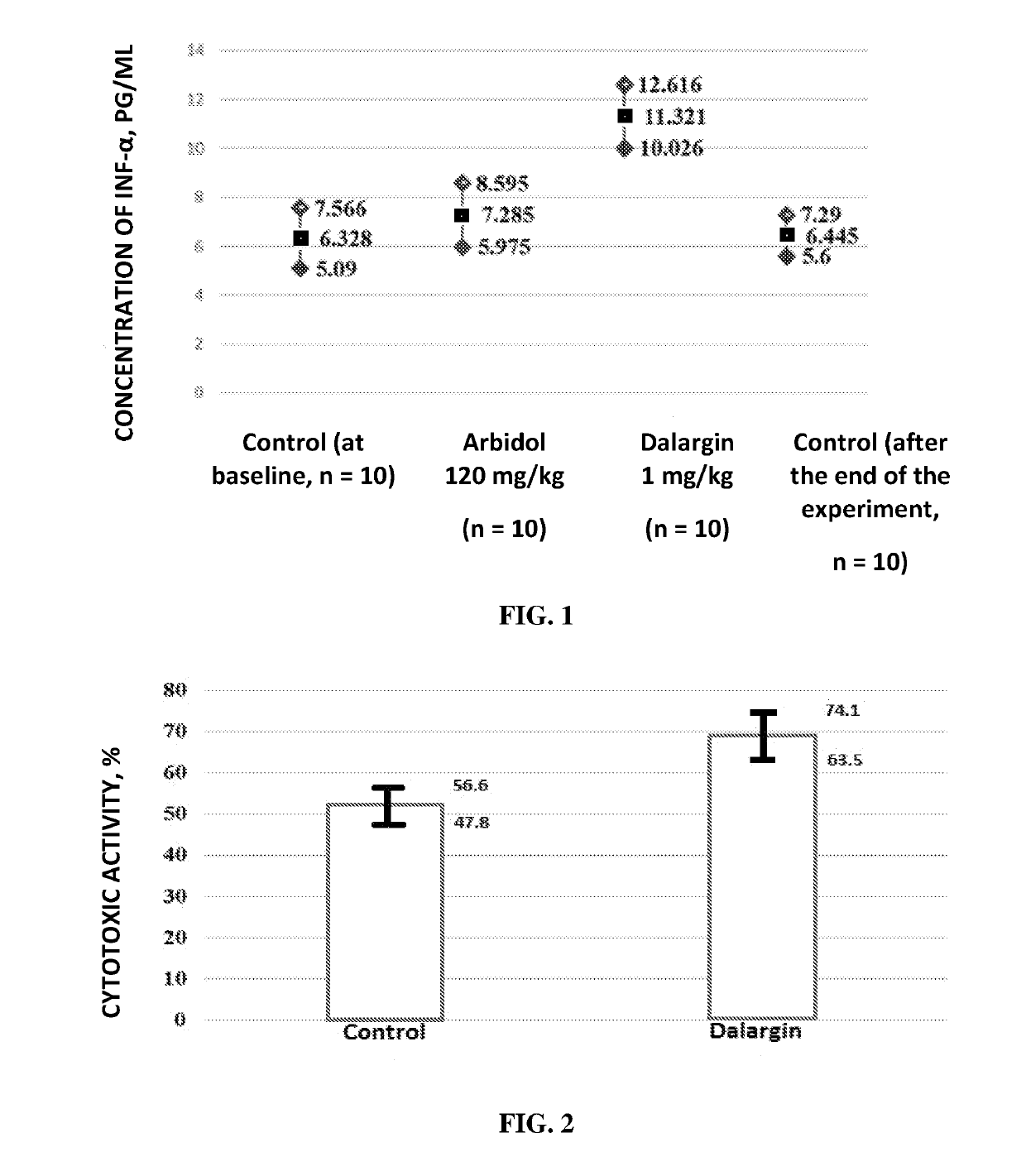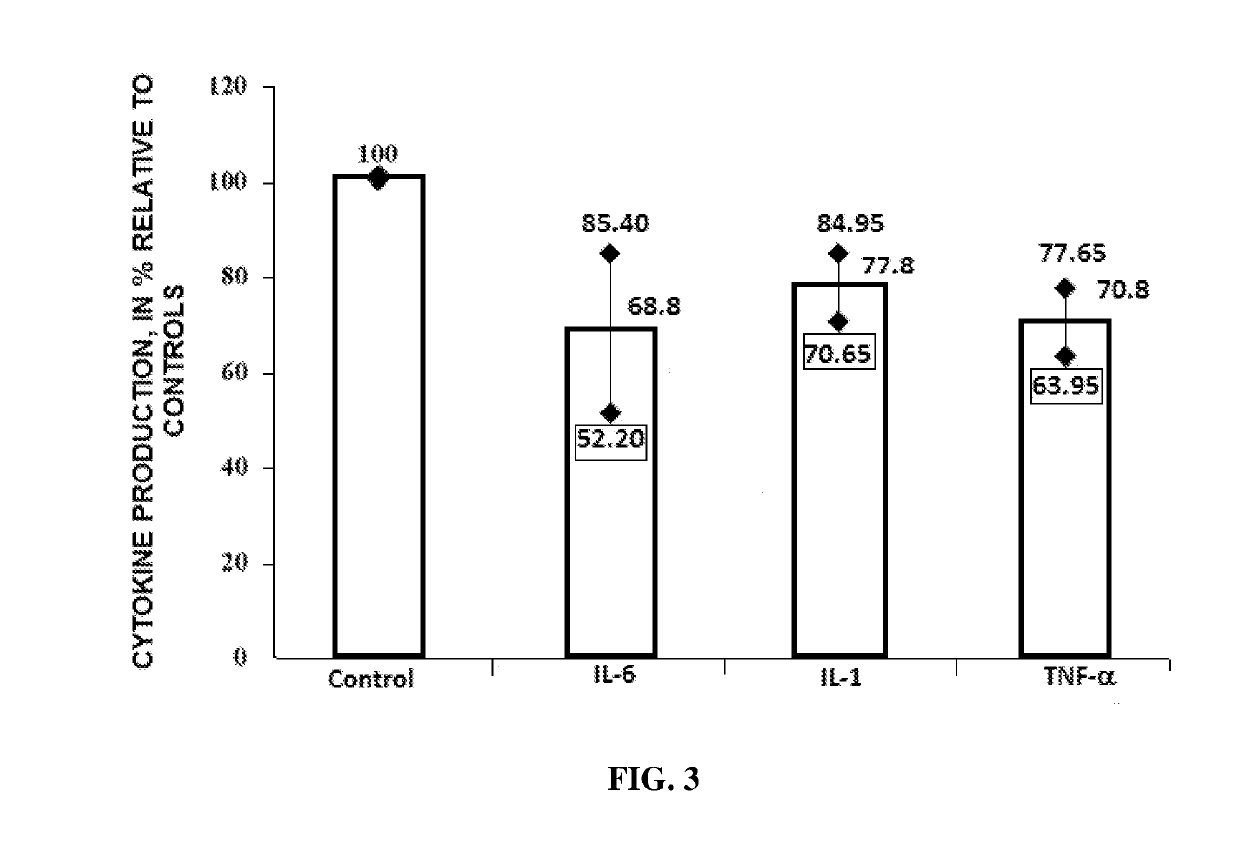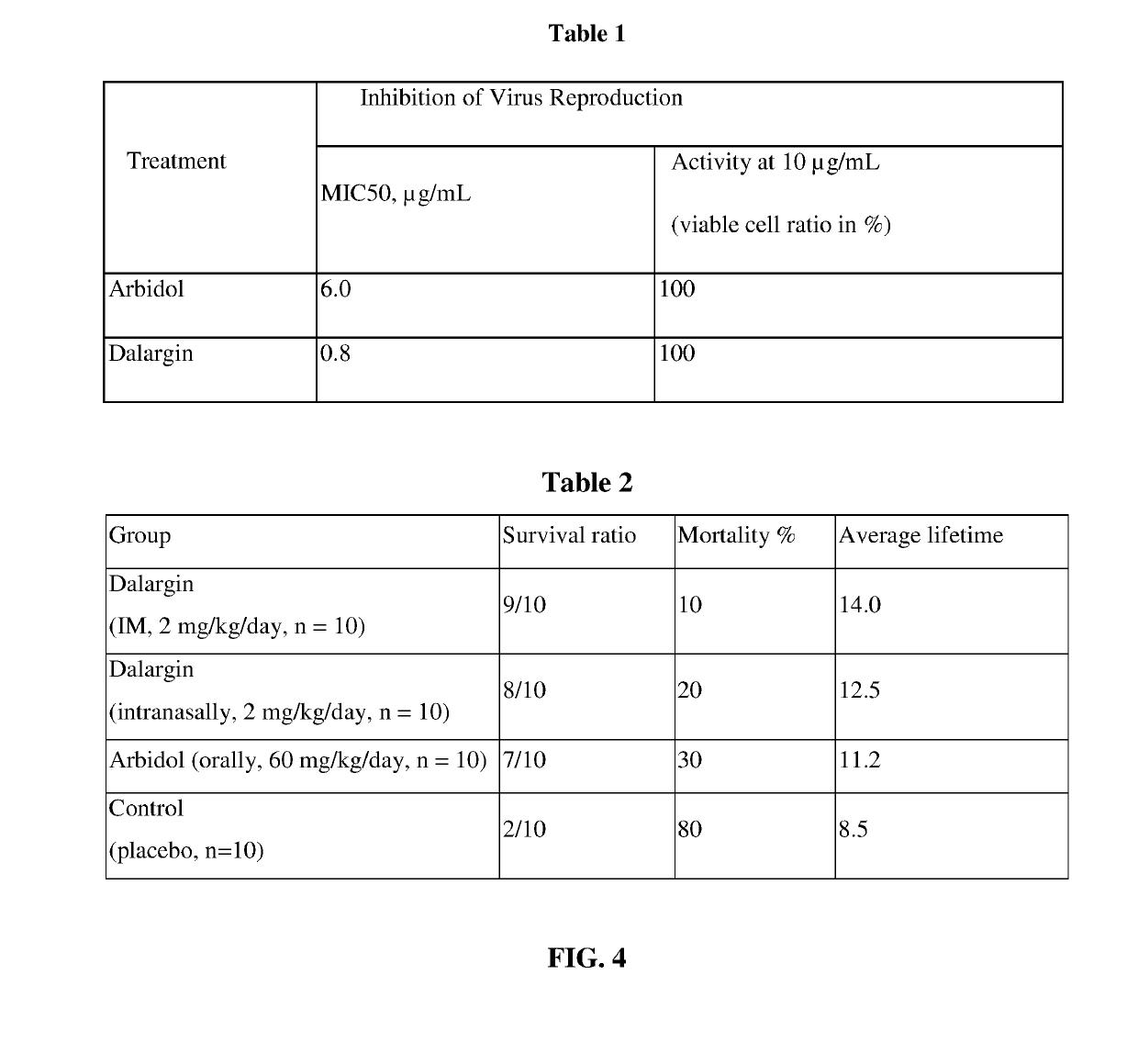Antiviral Immunotropic Agent for the Treatment of Acute Respiratory Viral Infections
an immunotropic agent and acute respiratory virus technology, applied in the field of medicine, can solve the problems of low economic benefits, low social burden of arvis, and high indirect costs
- Summary
- Abstract
- Description
- Claims
- Application Information
AI Technical Summary
Benefits of technology
Problems solved by technology
Method used
Image
Examples
example 1
on of Dalargin
[0058]A method of production of Dalargin and its pharmaceutically acceptable salt was described previously and is a classical method of peptide synthesis. A description of a method of synthesis of Dalargin is provided below.
Synthesis of H-Phe-Leu-Arg
[0059]Dissolve 750 g of Z-Leu-ONSu in 3 L of DMF, add 368 g of Arg to the resulting solution, stir for 24 hours. Evaporate DMF on a rotary evaporator at 41° C. under the vacuum of a rotary vane pump. Dissolve the resulting oil in 15 L of butanol and transfer to a glass desiccator equipped with a stirrer. Add 10 L of distilled water to the desiccator. Stir for 5 minutes until the layers have completely separated (10-24 hours). Decant the water into a clean can. Wash the organic layer 3 more times with 3 L portions of distilled water. Pool the aqueous layer and rinse waters and additionally extract with 4 L of butanol. Evaporate butanol on a rotary evaporator at 43° C. under the vacuum of a diaphragm pump.
[0060]Dissolve the r...
example 2
on of a Nasal Composition of the Hexapeptide
[0070]Preparation of a Dalargin-containing composition in spray form includes: preparation of Dalargin solution, vial filling.
[0071]In order to prepare the nasal composition, add 0.01 to 3 g of the hexapeptide (depending on the composition of the solution) to 50 mL of water for injections at 20-25° C. Bring the resulting solution to 100 mL with water for injections. Sterilise the resulting solution by membrane filtration under aseptic conditions by passing it through a 0.22 m filter, fill in polymer or glass vials under an inert gas blanket, close the vials with the finished product.
[0072]Additionally, sodium chloride can be added as part of the composition preparation process. To do this, dissolve 7 to 11 g of sodium chloride (depending on the composition of the solution) in 50 mL of water for injections at 20-25° C. under stirring. Then add 0.01 to 3 g of the hexapeptide (depending on the composition of the solution) under stirring. Brin...
example 3
Investigation of the Antiviral Activity of the Hexapeptide Versus the Reference Strain of the Influenza A / H1N1 Virus
[0076]A test was performed relative to Arbidol using strains of influenza A virus / New Caledonia / 20 / 99 (H1N1) in a model of MDCK tissue culture.
[0077]As Arbidol exhibited a 100% inhibiting effect (on the reproduction of epidemic virus strains) at a concentration of 10.0 μg / mL, this concentration in water was chosen for comparing the antiviral efficacy of the products under conditions of identical degree of infection with the influenza A virus.
[0078]Additionally, the concentrations inhibiting virus reproduction by 50% (MIC50) were calculated for each product.
[0079]It can be seen from the data presented in Table 1 (FIG. 4) that both substances exhibit a high antiviral activity relative to strains of the influenza A virus / New Caledonia / 20 / 99 (H1N1), with the hexapeptide having lower MIC values, under extremely low concentrations in solution.
PUM
| Property | Measurement | Unit |
|---|---|---|
| temperature | aaaaa | aaaaa |
| temperature | aaaaa | aaaaa |
| concentration | aaaaa | aaaaa |
Abstract
Description
Claims
Application Information
 Login to View More
Login to View More - R&D
- Intellectual Property
- Life Sciences
- Materials
- Tech Scout
- Unparalleled Data Quality
- Higher Quality Content
- 60% Fewer Hallucinations
Browse by: Latest US Patents, China's latest patents, Technical Efficacy Thesaurus, Application Domain, Technology Topic, Popular Technical Reports.
© 2025 PatSnap. All rights reserved.Legal|Privacy policy|Modern Slavery Act Transparency Statement|Sitemap|About US| Contact US: help@patsnap.com



